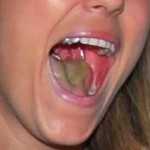Bruising is the manner in which the body responds to a local injury, damage, or trauma. Individuals who suffer from random bruising on legs without any known cause; or if the frequency of such inexplicable bruising is very high; should contact a doctor for proper diagnosis and effective treatment.
Random bruising on legs can arise due to wide ranging causes and underlying conditions such as hemophilia, aging, or diabetes.
Causes of random bruising on legs
Random bruising on legs or on any other part of the body can develop when capillaries, i.e., tiny blood vessels in the body, rupture, break, or form a minor leak below the skin. In most cases, bruises develop after banging into a hard object. Resultant bleeding below the skin leaves a reddish or a bluish-purple spot on the skin.The abnormal spot will slowly fade away and develop into shades of yellow or greenish bruises.
Also referred to as ecchymosisor a contusion, a bruise does not necessarily mean injury of the skin. Occasionally, the injury may occur deep inside the tissues and muscles. Such random bruises on legs can cause pain and persist for around 14 days.
Some of the common causes of random bruising on legs are listed below:
- Von Willebrand disease: It is a very rare genetic disease characterized by abnormal clotting of the blood. In addition to random bruising on legs, patients may also experience bleeding of the gums and nose. Around one percent of the population is afflicted by this disorder. In most cases, the symptoms remain mild and typically go unnoticed. Doctors will prescribe desmopressin drug to treat the condition.
- Insufficient layer of fat: The presence of body fat helps protect the body from easy bruising. It is fat which cushions any kind of impact or blow on the body and prevents the formation of bruises.People with insufficient layer of body fat are at increased risk to development of random bruising on legs even with the mildest of bumps. Such individuals may never be able to recollect which casual bump caused a particular bruise. Lots of people have deficient fat layer on their legs and arms.Children, thin people, and the elderly are the ones who generally have low body fat and thus more prone to random bruising on legs.
- Purpura simplex: It is a vascular disorder characterized by easy rupture of blood vessels, which in turn can aid easy bruising. The blood vessels may burst or break without any known trauma, or exercise, or other causative factors. Women are more susceptible to this condition than men. Purpura simplex generally causes reddish random bruising on legs, calves, and thighs.
- Thrombocytopenia: The body of people suffering from this disorder is unable to develop normal blood clots. Causes of thrombocytopenia are many and varied, including inheritance from family, acquired post birth, or a chronic case of paralysis. Patients may develop random red clots on legs. The affected part of the leg may also experience bruising as well as skin discoloration.
- Diabetes: Diabetics tend to develop black or brown marks on their skin, particularly on the creases and folds occurring around the groin, the knee joint, neck, and armpits. The occurrence of excess amounts of insulin is what causes such hyperpigmentation. The additional insulin comes onto the skin, more so in Type II diabetic patients.Individuals who experience random bruising on legs but have not yet been diagnosed with diabetes should keep a lookout for other symptoms of diabetes such as fatigue, excessive thirst, blurred vision, and frequent infections. If and when they occur, visit a doctor for proper diagnosis and treatment.
- Other medical conditions: Random bruising on legs can also occur due to the underlying presence of different health problems such as Ehlers-Danlos syndrome, Marfan’s syndrome, scurvy, hemophilia, multiple myeloma, leukemia, lupus, Hodgkin’s disease, and sepsis.
- Other causes: Intake of varied medicines such as ibuprofen, aspirin, oral contraceptives or birth control pills, and non-steroidal anti-inflammatory drugs or NSAIDs can increase the vulnerability to developing random bruising on legs.
Treatment
If the random bruises on legs are yellowish then it is an indication that it is disappearing. The bruises may have occurred a few days back and now are on the way to natural recovery.
- Visit a doctor if:
- The random bruises are painful, and/or abnormally swollen, or excessively large.
- If the bruises do not heal even after 4 weeks.
- Swelling can be reduced by:
- Taking lots of rest.
- Application of cold or heat compresses, or an ice pack on the affected area.
- Keeping the affected leg in an elevated position.
- Wrapping the affected region with an elastic bandage.
- Gently massage the region affected by random bruising on legs to alleviate the pain and increase the flow of blood.
- Eat a balanced, wholesome diet full of fresh vegetables and fruits, vitamins, minerals, and iron for preventing random bruising on legs.

